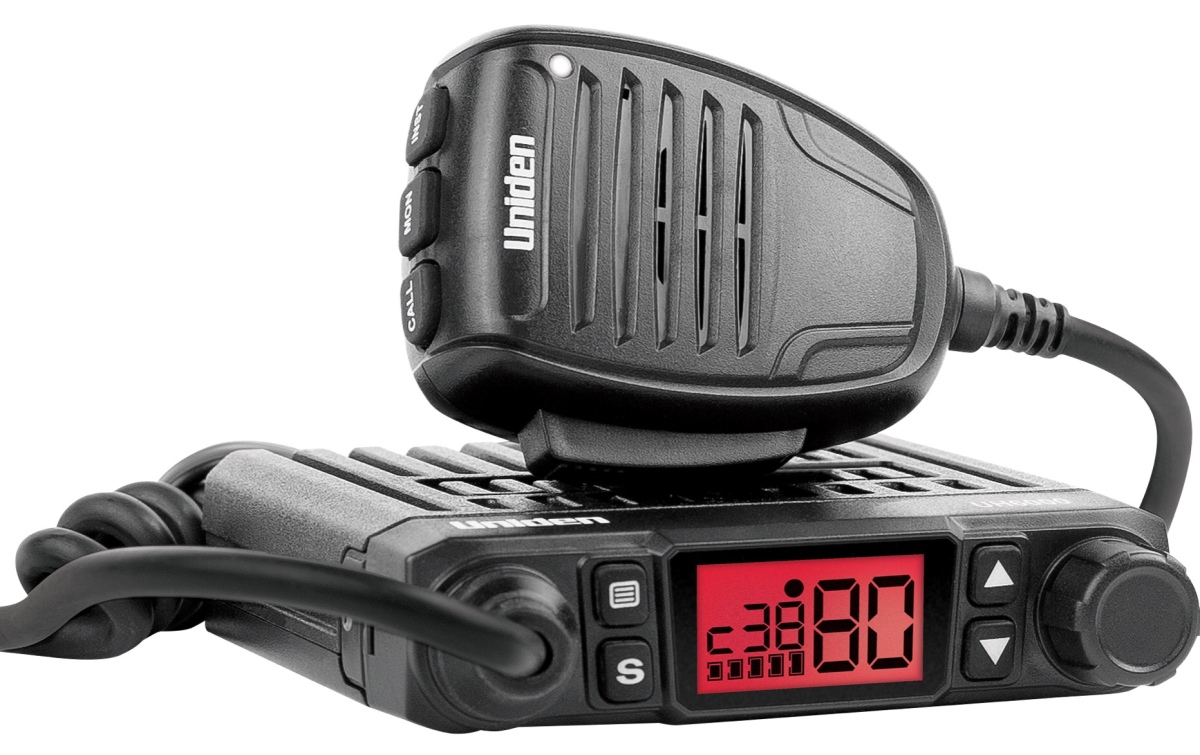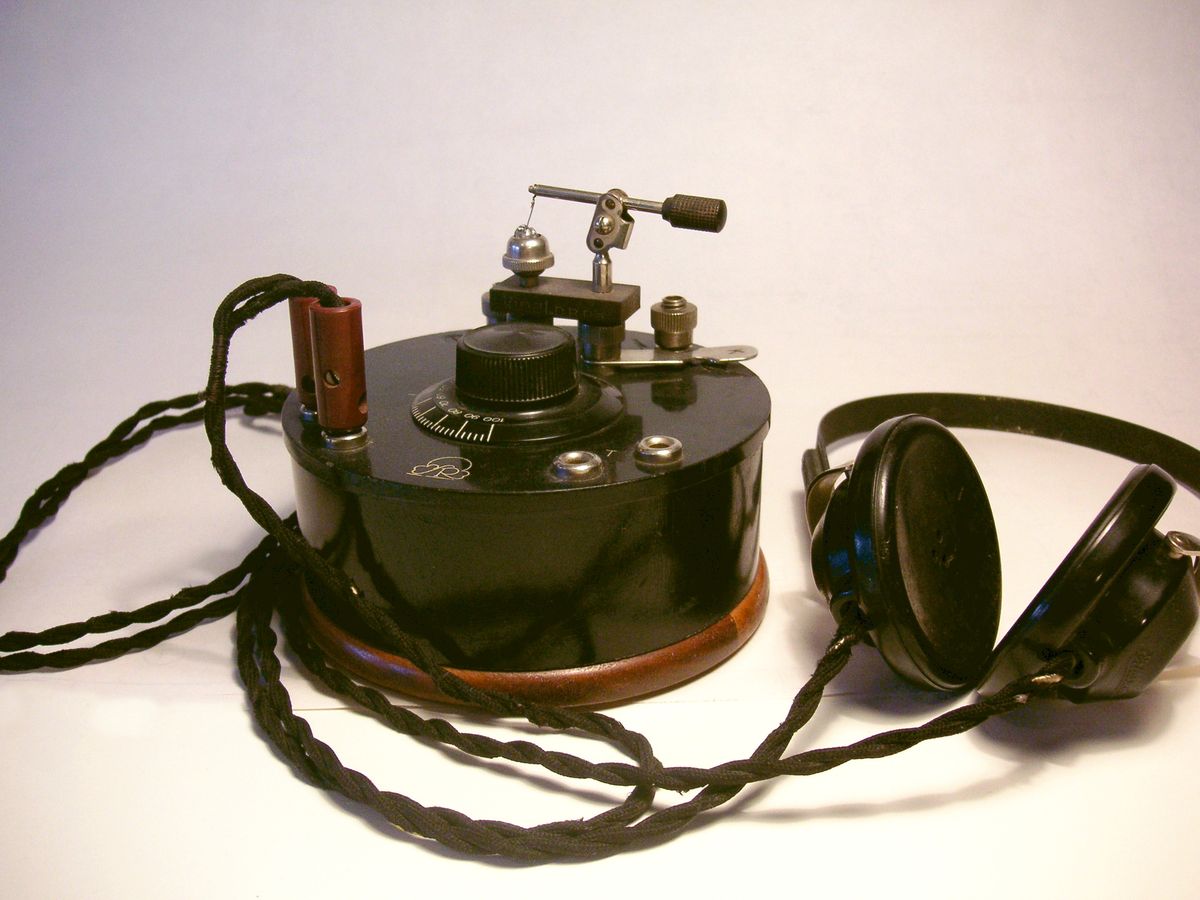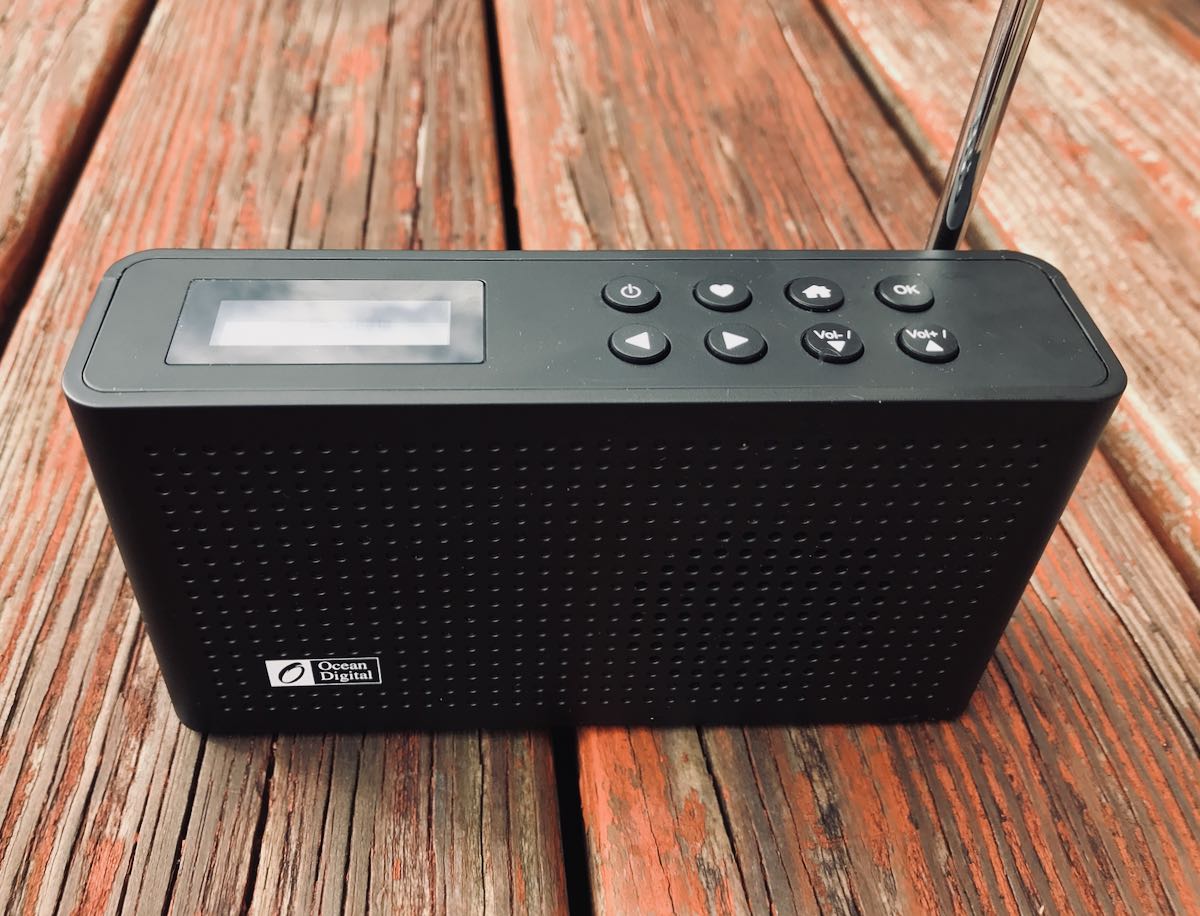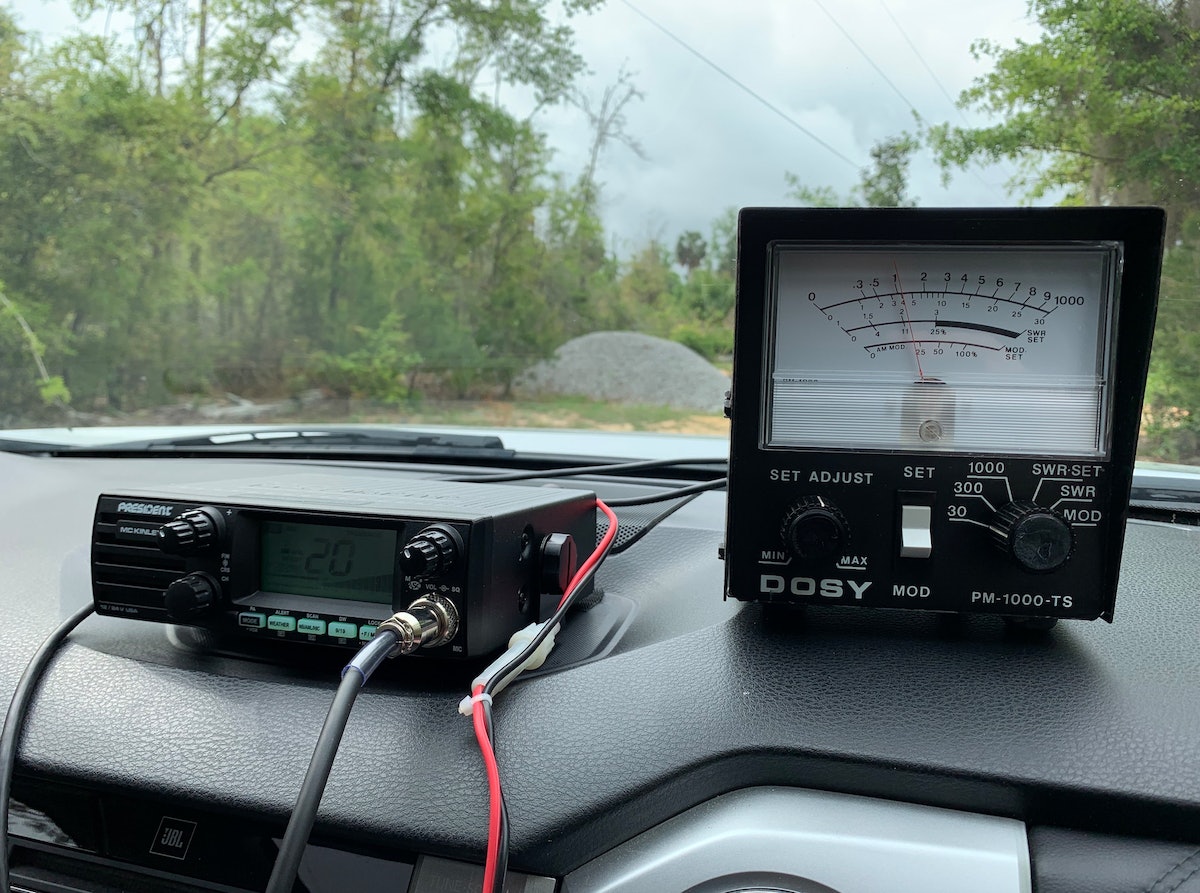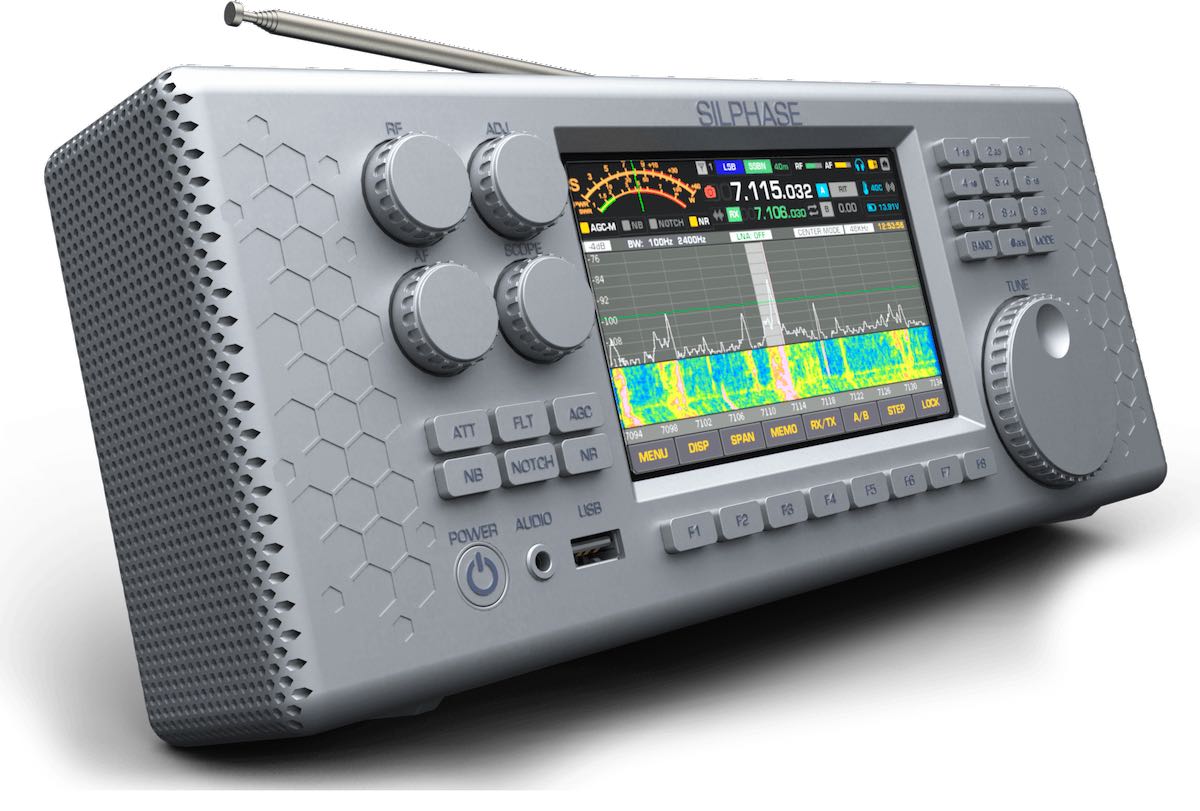Home>Devices & Equipment>Radio>What Is A Wireless Radio


Radio
What Is A Wireless Radio
Modified: January 22, 2024
Discover the functionality and benefits of wireless radios. Learn how these devices use radio waves to transmit and receive signals, making communication more convenient and efficient.
(Many of the links in this article redirect to a specific reviewed product. Your purchase of these products through affiliate links helps to generate commission for AudioLover.com, at no extra cost. Learn more)
Table of Contents
Introduction
Wireless radio technology has revolutionized the way we communicate and consume information. From smartphones to Wi-Fi networks and satellite communication, wireless radios have become an integral part of our modern lifestyle. But what exactly is a wireless radio?
In simple terms, a wireless radio refers to a device that uses radio waves to transmit and receive signals. It allows us to send and receive information over the airwaves, without the need for physical wired connections. This technology has vastly expanded our ability to communicate and access data from anywhere, making it an essential tool in various industries.
The concept of wireless communication dates back to the late 19th century when inventors and scientists like Guglielmo Marconi and Nikola Tesla paved the way for the development of wireless telegraph systems. Over the years, advancements in technology have led to the creation of more sophisticated and efficient wireless radios.
Today, we rely on wireless radios for a wide range of applications, including mobile communication, broadcasting, navigation systems, and internet connectivity. From portable devices like smartphones and tablets to complex systems used in aviation and satellite communication, wireless radios are an integral part of daily life.
In this article, we will delve into the world of wireless radios, exploring their components, types, applications, advantages, and future developments. Whether you’re a technology enthusiast, a professional in the field, or simply curious about how wireless communication works – this article will provide you with a comprehensive understanding of wireless radio technology.
Definition of Wireless Radio
A wireless radio, also known as a radio transmitter or receiver, is a device that uses electromagnetic waves to transmit and receive signals. It is a fundamental component of wireless communication systems, allowing information to be sent and received over long distances without the need for physical connections.
At its core, a wireless radio operates on the principle of converting audio or data signals into electromagnetic waves and transmitting them through the air. These waves, also known as radio waves, travel through the atmosphere and can be received by other radios tuned to the same frequency.
The key components of a wireless radio system include a transmitter, a receiver, and an antenna. The transmitter takes the audio or data signals and modulates them onto a carrier wave, which is then transmitted through the antenna. On the receiving end, the antenna captures the radio waves, which are then demodulated by the receiver to extract the original signal.
Wireless radios can operate on various frequency bands, including AM (Amplitude Modulation) and FM (Frequency Modulation). Each frequency band has its own advantages and is suitable for specific types of communication. For example, AM is commonly used for broadcasting radio signals, while FM is often used for high-fidelity audio transmission.
One of the distinguishing features of wireless radios is their ability to transmit and receive signals over long distances. This is made possible by the properties of radio waves, which have the ability to propagate through the atmosphere and reflect off objects, allowing for signal coverage even in areas with obstacles.
Advancements in wireless radio technology have led to the development of various communication systems, including mobile networks, satellite communication, Wi-Fi, and Bluetooth. These systems have revolutionized the way we connect and share information, providing us with the freedom to communicate wirelessly from virtually anywhere.
Wireless radios play a crucial role in our everyday lives, enabling us to make phone calls, browse the internet, watch television, and listen to music wirelessly. They have become an integral part of modern communication and continue to evolve and improve, paving the way for future innovations in wireless technology.
History of Wireless Radio
The history of wireless radio dates back to the late 19th century, with several inventors and scientists contributing to its development. One of the key figures in this history is Guglielmo Marconi, an Italian physicist and inventor known as the father of wireless communication.
In 1895, Marconi successfully transmitted radio signals over a distance of approximately two kilometers. This groundbreaking achievement marked the beginning of wireless telegraphy, laying the foundation for future advancements in wireless radio technology.
Over the next few years, Marconi continued to refine his wireless telegraphy system and conducted successful long-distance transmissions. In 1901, he famously sent the first transatlantic radio communication, establishing a wireless connection between Cornwall, England, and Newfoundland, Canada.
Marconi’s work sparked a wave of interest and innovation in wireless communication. Other inventors and scientists, such as Nikola Tesla and Reginald Fessenden, made significant contributions to the field. Tesla experimented with radio waves and proposed the concept of wireless power transmission, while Fessenden developed the first voice and music transmission over radio waves.
By the early 20th century, wireless radio technology began to find practical applications. It was extensively used for maritime communication, providing a reliable means of communication for ships at sea. In 1912, the Titanic disaster emphasized the importance of wireless radio as a critical tool for distress calls and communication in emergency situations.
During World War I, wireless radio played a vital role in military communications. It enabled rapid transmission of messages between troops and helped coordinate military operations. The war accelerated the development of wireless technology, leading to improvements in range, efficiency, and reliability.
Following the war, the field of radio broadcasting emerged. Radio stations began transmitting news, music, and entertainment programs, reaching a wide audience. The popularity of radio quickly grew, becoming a primary source of information and entertainment for people around the world.
In the mid-20th century, advancements in wireless radio technology led to the invention of television. The transmission of visual signals over radio waves revolutionized the way people consumed and experienced media. Television broadcasts became a staple in households, providing a visual and audio experience from the comfort of home.
In more recent times, the development of digital technology has further revolutionized wireless radio. Digital transmission formats, such as DAB (Digital Audio Broadcasting), have improved the quality and efficiency of radio signals. Additionally, the rise of the internet and streaming services has opened up new avenues for wireless radio, enabling listeners to access a vast array of content online.
Today, wireless radio technology continues to evolve and advance. From smartphones and wireless internet networks to satellite communication and IoT devices, wireless radios have become an indispensable part of our interconnected world. The rich history of wireless radio has paved the way for incredible advancements and continues to shape the future of communication.
Components of a Wireless Radio System
A wireless radio system consists of several key components that work together to transmit and receive signals. These components play a crucial role in ensuring the efficiency and reliability of wireless communication. Let’s take a closer look at the main components of a wireless radio system:
- Transmitter: The transmitter is responsible for taking the audio or data signals and converting them into a format suitable for transmission. It includes a modulator that mixes the audio or data signals with a carrier wave, creating a modulated signal ready for transmission. The transmitter also controls the power level of the signal to ensure it is transmitted at the desired strength.
- Receiver: The receiver is tasked with capturing the transmitted signal and extracting the original audio or data. It includes a demodulator that separates the carrier wave from the modulated signal, allowing for the extraction of the information. The receiver also amplifies and filters the signal to enhance its quality before it is outputted.
- Antenna: The antenna serves as the interface between the radio system and the surrounding environment. It plays a vital role in transmitting and receiving radio waves. The transmitter uses the antenna to emit the modulated signal into the air, while the receiver uses it to capture incoming radio waves for demodulation. The design and positioning of the antenna can impact the range and coverage of the wireless radio system.
- Carrier Wave: The carrier wave is a continuous waveform that carries the modulated audio or data signals. It provides the medium through which the information is transmitted. The frequency and modulation scheme of the carrier wave determine the characteristics of the wireless communication, such as bandwidth, quality, and range.
- Power Supply: Every wireless radio system requires a power supply to operate. This can be in the form of batteries, AC power, or other sources of electrical energy. The power supply ensures that the transmitter and receiver have sufficient power to perform their functions reliably.
- Control Unit: The control unit oversees the operation of the wireless radio system. It manages the various components, monitors signal quality, adjusts frequencies, and ensures proper synchronization between the transmitter and receiver. The control unit ensures optimal performance and may include features such as frequency tuning, channel selection, and signal encryption.
These components work in harmony to facilitate wireless communication. The transmitter converts audio or data into modulated signals, which are transmitted through the antenna. The receiver captures the signals using its antenna and demodulates them to extract the original information. The power supply provides the necessary electrical energy, while the control unit manages and coordinates the overall operation of the wireless radio system.
By understanding the components of a wireless radio system, we can appreciate the complexity and sophistication involved in enabling seamless wireless communication. Each component plays a unique role, contributing to the overall performance and reliability of the system.
Types of Wireless Radios
Wireless radios come in various types, each designed for specific applications and operating under different principles. These different types of wireless radios cater to a wide range of industries and user needs. Let’s explore some of the common types of wireless radios:
- Mobile Radios: Mobile radios are commonly used in transportation and public safety sectors. They are designed for use in vehicles, such as police cars, ambulances, and taxis. Mobile radios provide reliable communication between dispatchers and field units, enabling efficient coordination and quick response times.
- Walkie-Talkies: Walkie-talkies, also known as handheld radios, are portable wireless devices that provide two-way communication. They are commonly used for short-range communication in various settings, such as construction sites, warehouses, and outdoor activities. Walkie-talkies offer convenience, allowing individuals or groups to communicate easily without relying on network coverage.
- Satellite Radios: Satellite radios utilize satellite communication technology to offer worldwide coverage. They receive and transmit signals via satellites in orbit, enabling communication in remote areas or during natural disasters where terrestrial networks may be unavailable. Satellite radios are commonly used in maritime, aviation, and emergency communication scenarios.
- Wi-Fi Radios: Wi-Fi radios enable wireless local area network (WLAN) connectivity. They allow devices to connect to the internet or communicate with each other within a specified range, typically within homes, offices, or public hotspots. Wi-Fi radios are found in smartphones, laptops, routers, and various smart home devices.
- Bluetooth Radios: Bluetooth radios provide short-range wireless communication between devices. They are commonly used for connecting peripherals to devices, such as wireless keyboards, mice, headphones, and speakers. Bluetooth radios are also key components in hands-free car kits and smart home automation systems.
These are just a few examples of the types of wireless radios available. Other types include radio modules used in Internet of Things (IoT) devices, radio broadcasting equipment, and specialized radios for industries like aviation, military, and healthcare.
It’s important to note that many wireless devices nowadays integrate multiple types of radios to offer versatile connectivity options. For example, modern smartphones often have mobile, Wi-Fi, and Bluetooth radios built-in, allowing users to access different networks and services seamlessly.
The choice of wireless radio type depends on factors such as required range, data rate, power consumption, and specific use cases. Understanding the different types of wireless radios and their capabilities enables professionals and consumers to select the most suitable option for their needs.
Applications of Wireless Radios
Wireless radios are employed in a wide range of applications, revolutionizing the way we communicate, access information, and interact with various devices. Their versatility and convenience have made them essential components in numerous industries. Let’s explore some common applications of wireless radios:
- Mobile Communication: Wireless radios are at the heart of mobile communication systems, enabling us to make phone calls, send text messages, and access the internet on our smartphones. Mobile networks utilize wireless radios to provide coverage and allow seamless communication between devices.
- Broadcasting: Radio broadcasting relies on wireless radios to transmit audio signals over the airwaves. Radios in homes, cars, and portable devices receive these signals, allowing us to listen to news, music, talk shows, and other programming. Wireless radios have also facilitated the shift to digital radio broadcasting, providing improved sound quality and additional features.
- Wireless Internet Connectivity: Wi-Fi radios enable wireless internet connectivity, allowing us to access the internet without the need for physical cables. Wi-Fi networks are found in homes, offices, cafes, and public spaces, providing convenient internet access for devices such as smartphones, laptops, and smart home devices.
- Satellite Communication: Satellite radios are crucial for global communication. They enable communication in areas where terrestrial networks are unavailable or unreliable, such as remote locations, ships at sea, and aircraft in flight. Satellite communication is used in various sectors, including maritime, aviation, emergency response, and broadcasting.
- Internet of Things (IoT): Wireless radios play a vital role in IoT applications, connecting devices and allowing them to communicate and exchange data. IoT devices, such as smart home appliances, wearables, and industrial sensors, often utilize wireless radios to connect to networks and enable automation, remote control, and data monitoring.
- Public Safety and Emergency Services: Wireless radios are critical for public safety organizations like police, firefighters, and paramedics. These radios provide reliable communication for emergency response teams, allowing them to coordinate operations, share vital information, and ensure the safety of the public.
These are just a few examples of the diverse applications of wireless radios. They are also commonly used in areas such as transportation, logistics, manufacturing, agriculture, healthcare, and entertainment.
Wireless radios have transformed the way we communicate, stay connected, and access information. Their applications continue to expand as technology advances, opening up new possibilities and improving efficiency in various industries.
Advantages and Disadvantages of Wireless Radios
Wireless radios have revolutionized communication and connectivity, offering a wide array of advantages. However, they also come with a few disadvantages. Let’s examine the advantages and disadvantages of wireless radios:
Advantages:
- Convenience: Wireless radios provide the convenience of mobility, allowing communication and access to information without the need for physical connections. This allows users to stay connected on the go and enables flexibility in device placement.
- Flexibility: Wireless radios offer flexibility in terms of device connectivity. They allow multiple devices to connect to a network simultaneously, providing seamless and hassle-free communication and data transmission without the constraints of wired connections.
- Scalability: Wireless radio systems can easily expand to accommodate a larger number of devices or a broader coverage area. This scalability makes it feasible to deploy wireless communication in various environments, from small offices to large-scale public networks.
- Accessibility: Wireless radios enable connectivity in areas where wired infrastructure is impractical or unavailable. Remote or rural locations, airplanes, and ships at sea can all benefit from wireless communication, ensuring connectivity regardless of physical barriers.
- Cost-Effective: Wireless radio systems can be more cost-effective than wired infrastructure, especially in cases where extensive cabling is not feasible or cost-prohibitive. Wireless communication eliminates the need for expensive infrastructure installation and maintenance.
Disadvantages:
- Interference: Wireless signals are susceptible to interference from various sources, such as other wireless devices, electronic equipment, or physical obstructions. This can impact the quality and reliability of the wireless connection, leading to data loss or degraded performance.
- Limited Range: Wireless radio signals have a limited range compared to wired connections. The range can be affected by factors such as signal strength, frequency, obstacles, and environmental conditions. Users must be within the range of the wireless signal source to maintain a stable connection.
- Security Risks: Wireless radios can be vulnerable to security breaches, such as unauthorized access, interception of data, or network intrusion. Encryption and proper security measures must be implemented to protect sensitive information and mitigate potential risks.
- Signal Congestion: In densely populated areas, multiple wireless devices can compete for limited bandwidth, leading to signal congestion and reduced performance. Shared wireless networks, such as public Wi-Fi hotspots, may experience slower speeds and higher latency during peak usage times.
- Power Consumption: Wireless radios consume energy to function, and battery-powered devices need to manage power efficiently to maximize their operating time. Wireless communication can drain device batteries faster, requiring more frequent recharging or the use of external power sources.
Despite the disadvantages, the advantages of wireless radios have far-reaching impacts and have transformed the way we communicate and interact with technology. Advancements in wireless technology continue to address and mitigate the challenges associated with wireless communication.
Future Developments in Wireless Radio Technology
Wireless radio technology is constantly evolving, with ongoing research and development aimed at improving performance, expanding capabilities, and addressing existing challenges. The future holds exciting possibilities for wireless radio technology. Here are some anticipated developments:
- 5G Networks: The deployment of 5G networks is underway, promising significant advancements in wireless communication. 5G networks will provide faster data speeds, lower latency, and increased capacity, enabling real-time applications, IoT connectivity, and enhanced mobile experiences.
- Massive IoT: Wireless radios are expected to support massive machine-type communication, connecting billions of IoT devices. Future wireless networks will be optimized to handle the massive volume of low-power IoT devices, enabling seamless connectivity and efficient data exchange.
- Millimeter Wave Communication: Millimeter wave frequencies, in the higher frequency bands, offer the potential for significantly higher data rates and larger bandwidths. Ongoing research aims to harness this spectrum for various applications, including high-speed wireless internet, point-to-point communication, and high-resolution imaging.
- Energy Harvesting: Future wireless radios may incorporate energy harvesting techniques to reduce reliance on traditional power sources. Harvesting ambient energy from the environment, such as solar or radio frequency signals, can enable self-powered or energy-efficient wireless devices.
- Mesh Networks: Mesh networks, where devices communicate with each other instead of relying solely on a central hub, hold promise for wireless radio technology. These networks can provide greater reliability, coverage, and flexibility, particularly in large-scale deployments or areas with limited infrastructure.
- Improved Security: Advancements in encryption, authentication, and other security measures will be crucial to ensuring robust wireless communication. Future wireless radios will employ enhanced security protocols to protect against unauthorized access, data breaches, and network vulnerabilities.
- Artificial Intelligence (AI) Integration: AI algorithms can optimize wireless communication by intelligently managing network resources, predicting network congestion, and adapting to changing conditions. AI integration can improve efficiency, user experience, and overall system performance.
- Ubiquitous Connectivity: The vision of ubiquitous connectivity involves seamless wireless communication across various devices and environments. Future developments will focus on seamlessly integrating wireless radios into everyday objects, creating a connected environment that enhances productivity, convenience, and quality of life.
These are just a few examples of the future developments in wireless radio technology. The continued innovation in wireless communication holds the potential to revolutionize various industries, enable new services and applications, and enhance the way we interact with the world around us.
Conclusion
Wireless radios have transformed the way we communicate, connect, and access information. From mobile phones and Wi-Fi networks to satellite communication and IoT devices, wireless radios have become integral components of our daily lives. They offer convenience, flexibility, and scalability, making communication possible in various settings and environments.
The history of wireless radio technology is rich, with pioneers like Marconi and Tesla laying the foundation for its development. Over the years, advancements in wireless radio technology have led to significant improvements in range, speed, and efficiency.
Wireless radios find applications in diverse sectors, including telecommunications, broadcasting, public safety, and IoT. They enable us to make phone calls, listen to music, stream videos, and access the internet from anywhere. They have enhanced emergency response systems, revolutionized entertainment through radio broadcasting and television, and paved the way for connected smart homes and cities.
As with any technology, wireless radios have their advantages and disadvantages. They offer convenience, mobility, and cost-effectiveness. However, they can be susceptible to interference, have limited range, and pose security risks. Nonetheless, ongoing research and development aim to address these challenges and make wireless communication even more seamless and secure.
The future of wireless radio technology is promising. With the advent of 5G networks, massive IoT connectivity, and advancements in millimeter wave communication, we can expect faster speeds, lower latency, and greater capacity. Energy harvesting, mesh networks, AI integration, and ubiquitous connectivity will further enhance the capabilities of wireless radios.
In conclusion, wireless radio technology has revolutionized the way we communicate and access information. It has opened up endless possibilities, connecting people and devices across the globe. As technology continues to advance, wireless radios will play an increasingly important role in shaping our interconnected world.


